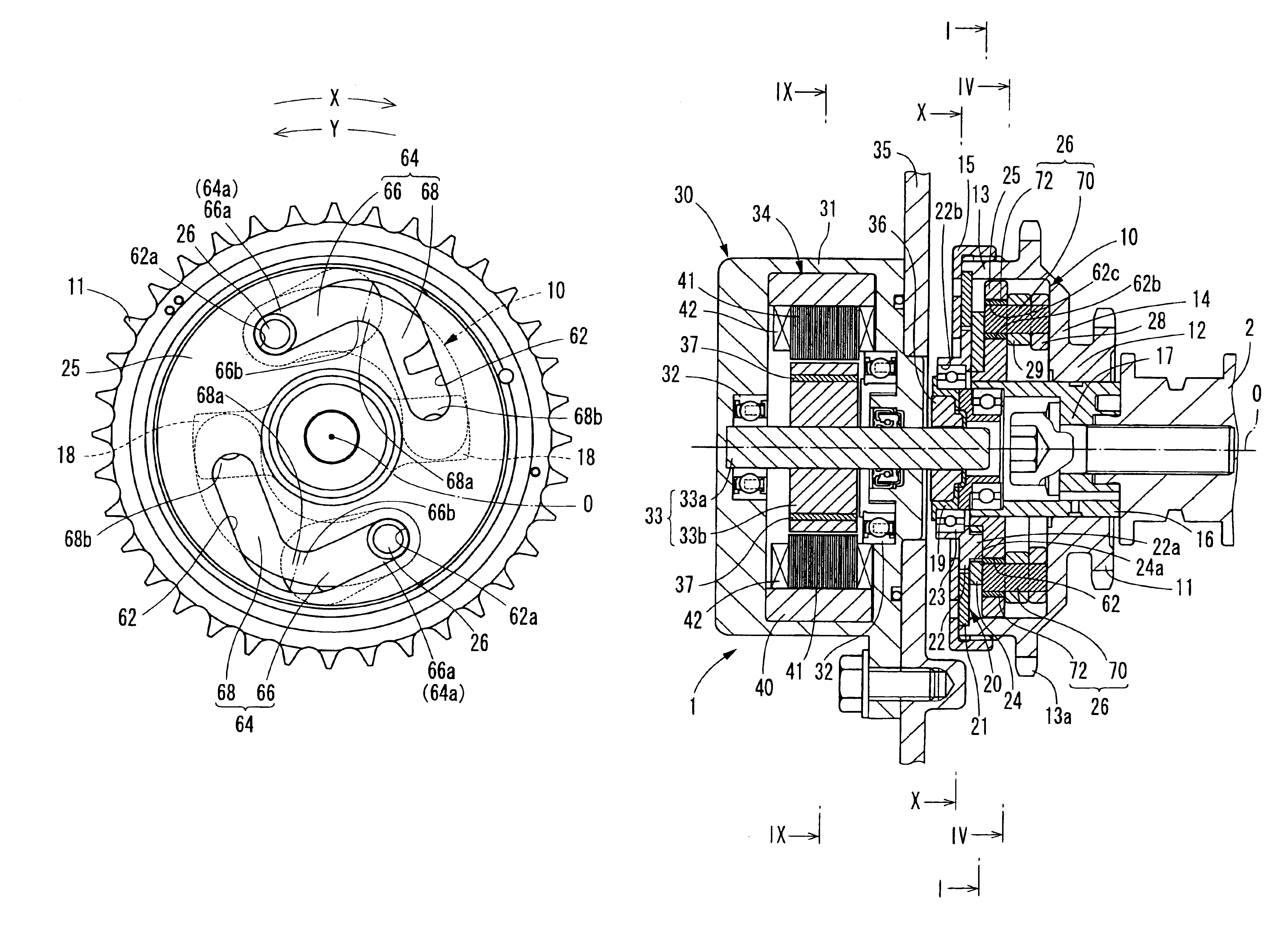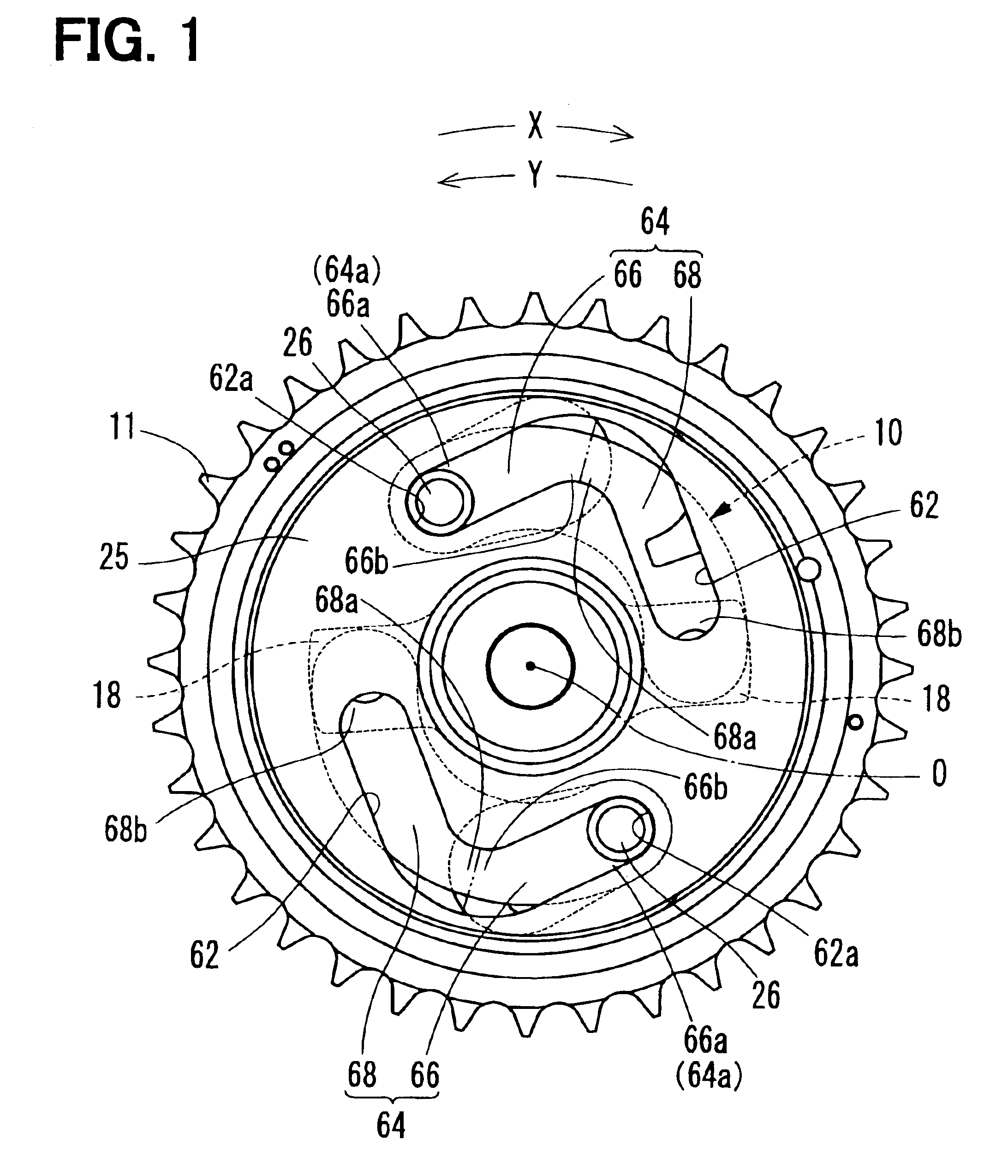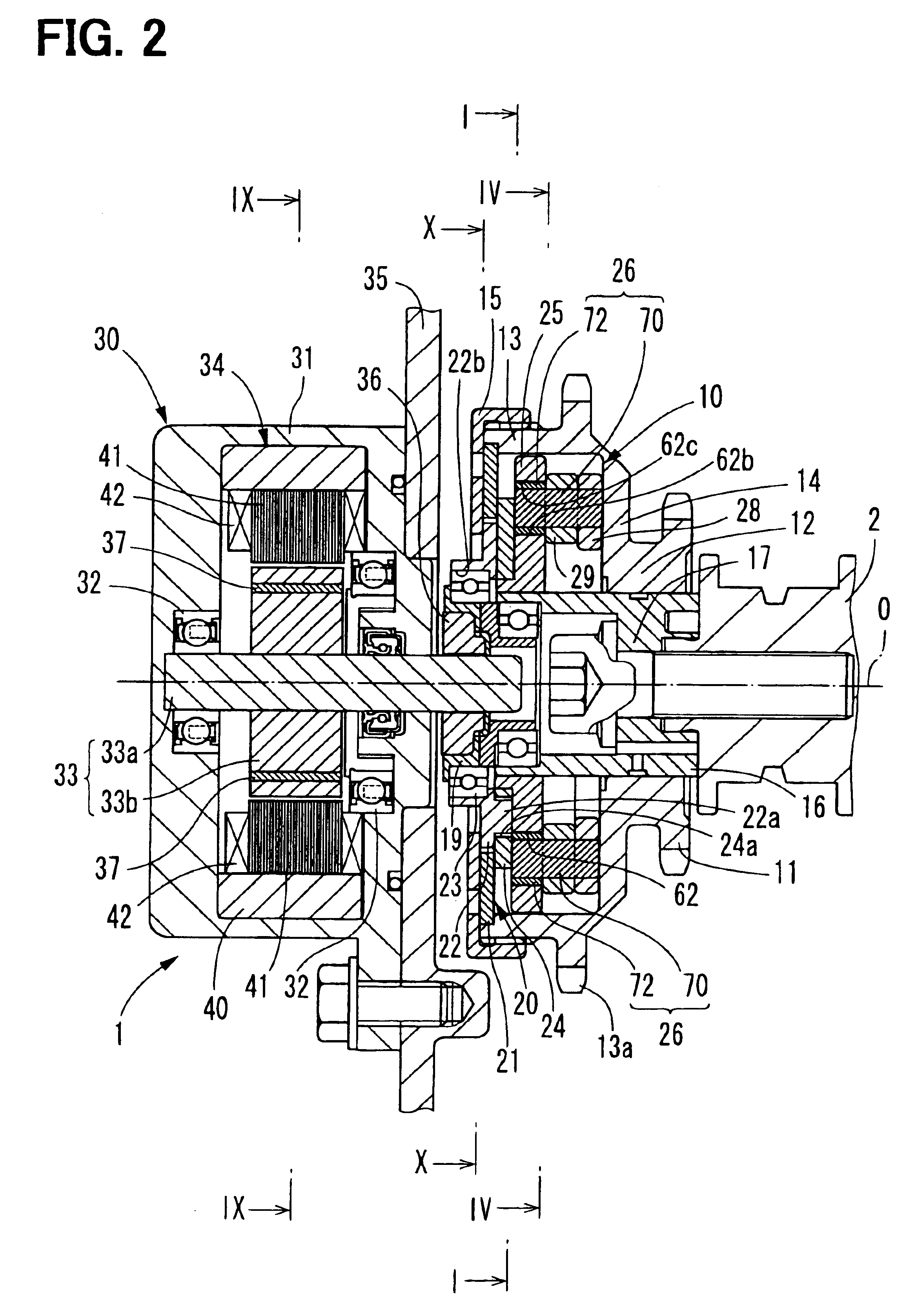Valve timing adjustment device
a timing adjustment and valve technology, applied in the direction of machines/engines, mechanical equipment, output power, etc., can solve the problems of difficulty in achieving the desired intermediate phase with precision, and achieve the effect of facilitating the formation of guide passages, and increasing the degree of freedom
- Summary
- Abstract
- Description
- Claims
- Application Information
AI Technical Summary
Benefits of technology
Problems solved by technology
Method used
Image
Examples
first embodiment
[0040]FIG. 2 depicts a valve timing adjustment device 1 according to the first embodiment of the present invention. The valve timing adjustment device 1 generally includes a transmission system for transmitting a drive torque from a drive shaft such as a crankshaft to a driven shaft such as a camshaft 2 of an engine. The valve timing adjustment device 1 adjusts the valve timing of an intake valve of the engine by changing the rotational phase of the camshaft 2 relative to the crankshaft. A hollow arrow identifies this change in FIG. 3.
[0041]The valve timing adjustment device 1 includes a phase change mechanism 10, a guide rotary body 25, a movable body 26, an electric motor 30, and a speed reducer 20.
[0042]FIG. 2 and FIG. 4 depict the phase change mechanism 10 including a sprocket 11, an output shaft 16, and arm members 28, 29. As stated above, the phase change mechanism 10 changes the rotational phase of the camshaft 2 relative to the crankshaft. It should be noted that for the sak...
second embodiment
[0081]FIG. 11 depicts a valve timing adjustment device in accordance with the second embodiment of the present invention. The second embodiment of the present invention is a modification of the first embodiment and, therefore, substantially same constituent parts denoted by the same reference symbols.
[0082]In the second embodiment, the gradually decreasing region 66 and the gradually increasing region 68 are formed in a curved shape. Furthermore, the end 66b of the gradually decreasing region 66 and the end 68a of the gradually increasing region 68 are connected to each other in a curved shape. Here, a double dot and dashed line in FIG. 11 shows the connection boundary between the end 66b and the end 68a.
[0083]According to the second embodiment and as shown in FIG. 12, the shaft phase can be changed linearly with respect to the rotational phase of the guide rotary body 25 to the sprocket 11. This provides a constant ratio of speed-reduction between the guide rotary body 25 and the ...
third embodiment
[0084]FIG. 13 depicts a valve timing adjustment device in accordance with a third embodiment of the present invention. The third embodiment of the present invention is a modification of the first embodiment and, therefore, substantially same constituent parts are denoted by the same reference symbols.
[0085]In the third embodiment, the gradually decreasing region 66 is slanted from the end 66b toward the end 66a in the delay direction Y and away from the rotational centerline O. Furthermore, the end 64a of the guide passage 64 blocked by the stopper 62a is common with the end 68b of the gradually increasing region 68. The gradually increasing region 68 is slanted from the end 68a toward the end 68a in the advance direction X and away from the rotational centerline O. Still further, the gradually decreasing region 66 and the gradually increasing region 68 are formed in a curve shape, respectively. Furthermore, the end 66b of the gradually decreasing region 66 and the end 68a of the gr...
PUM
 Login to View More
Login to View More Abstract
Description
Claims
Application Information
 Login to View More
Login to View More - R&D
- Intellectual Property
- Life Sciences
- Materials
- Tech Scout
- Unparalleled Data Quality
- Higher Quality Content
- 60% Fewer Hallucinations
Browse by: Latest US Patents, China's latest patents, Technical Efficacy Thesaurus, Application Domain, Technology Topic, Popular Technical Reports.
© 2025 PatSnap. All rights reserved.Legal|Privacy policy|Modern Slavery Act Transparency Statement|Sitemap|About US| Contact US: help@patsnap.com



